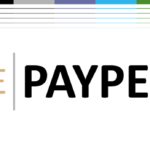With professionals around the globe working from home during the pandemic, and many using their home networks and personal devices to conduct business, many have struggled to rebuild their cybersecurity infrastructures from scratch, and have scrambled to figure out how to protect their organizations’ data.
Bad actors have taken advantage of this by targeting companies while their defenses are down. Businesses are well aware of the heightened risk of B2B theft and fraud and the impact it can have on their financial stability. Protecting their operations from fraud is among the most pressing challenges that firms expect to face, and many businesses have already learned about these risks the hard way.
In fact, 60% of U.S. and U.K. businesses face cross-border payment fraud, according to the Global B2B Payments Playbook, a PYMNTS and Worldpay B2B Payments collaboration.
Get the study: Global B2B Payments Playbook
Struggling With Fraud
The rapid growth of cross-border commerce represents an enormous opportunity for firms, as $10 trillion flows between businesses around the world annually. Hurdles are still present in the space, however, as many businesses continue to struggle with cumbersome paper-based workflows, payment delays and fraud.
One form of fraud PYMNTS reported is invoice fraud. In this method, cybercriminals prey on unsuspecting companies by posing as vendors and emailing bills for work that was never performed. The money is then laundered after being redirected into overseas accounts. Victims often do not know they have been scammed until a legitimate supplier sends an invoice for the same work at a later date.
Another method targeting business leaders worldwide is the capital call scam. Using email, bad actors impersonate insurance or investment companies and ask for funds transfers that they claim are part of an investment commitment. The fraudulent documents attached to these emails then prompt targets to enter their payment details, typically requesting larger amounts than those for other types of transfers due to the nature of the transactions.
Boosting Their Defenses
To boost their defenses amid the new normal of remote work, many businesses are turning to automated accounts receivable (AR) and accounts payable (AP) solutions. Firms often approach automation as a multifaceted process — reducing their use of legacy B2B payments like paper checks and wire transfers and increasing their usage of digital B2B payment methods, such as virtual cards, and then automating those digital transactions via integrated enterprise resource planning (ERP) systems.
The chief benefit of such digital solutions is the data they can gather and manage at scale. Digitizing B2B payments data and managing it via ERP systems enables businesses to automate their security practices using algorithm-based fraud detection, which can enable businesses to spot fraudulent transactions with greater accuracy than manual techniques.
Digitizing B2B payments in this fashion provides a multitude of operational benefits that extend well beyond enhanced payment security, reducing days sales outstanding (DSO), overall delinquency rates and costs.
It is clear that B2B automation can serve as a powerful tool to help businesses future-proof their payments operations. Leveraging cloud-based ERP tools, in particular, can serve to make payments faster, safer and more efficient, while also supporting a remote workforce.







